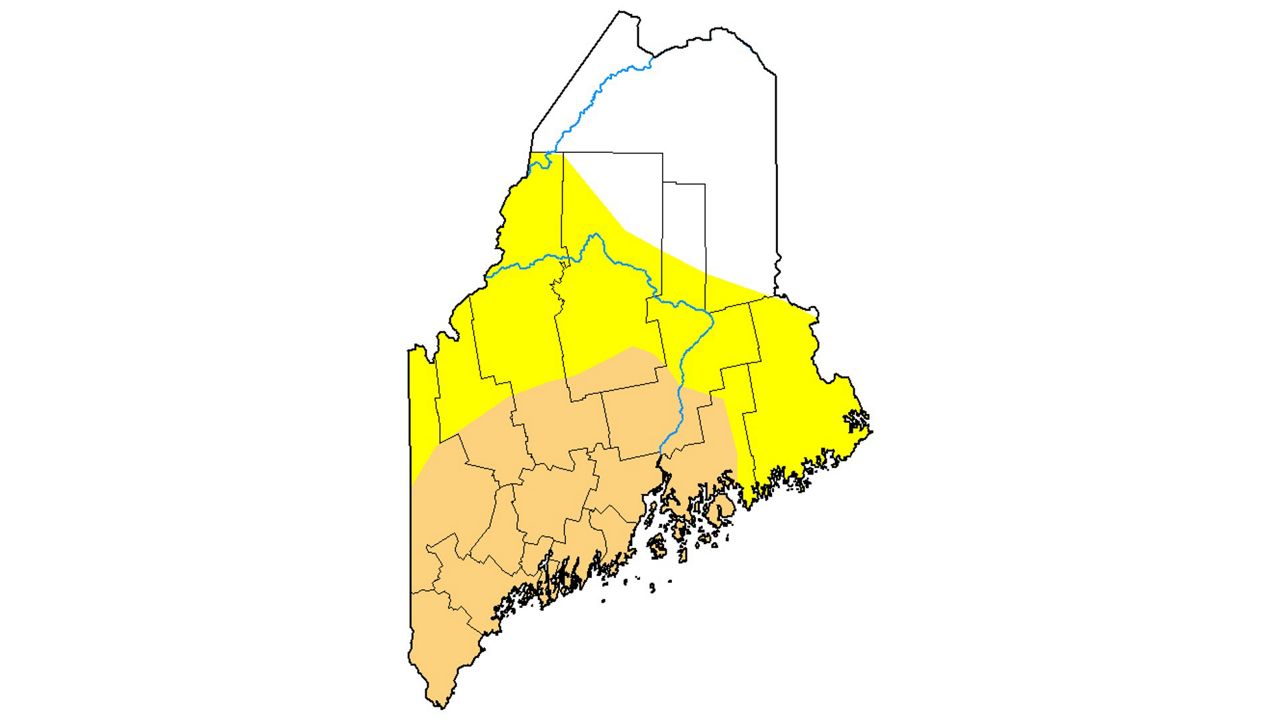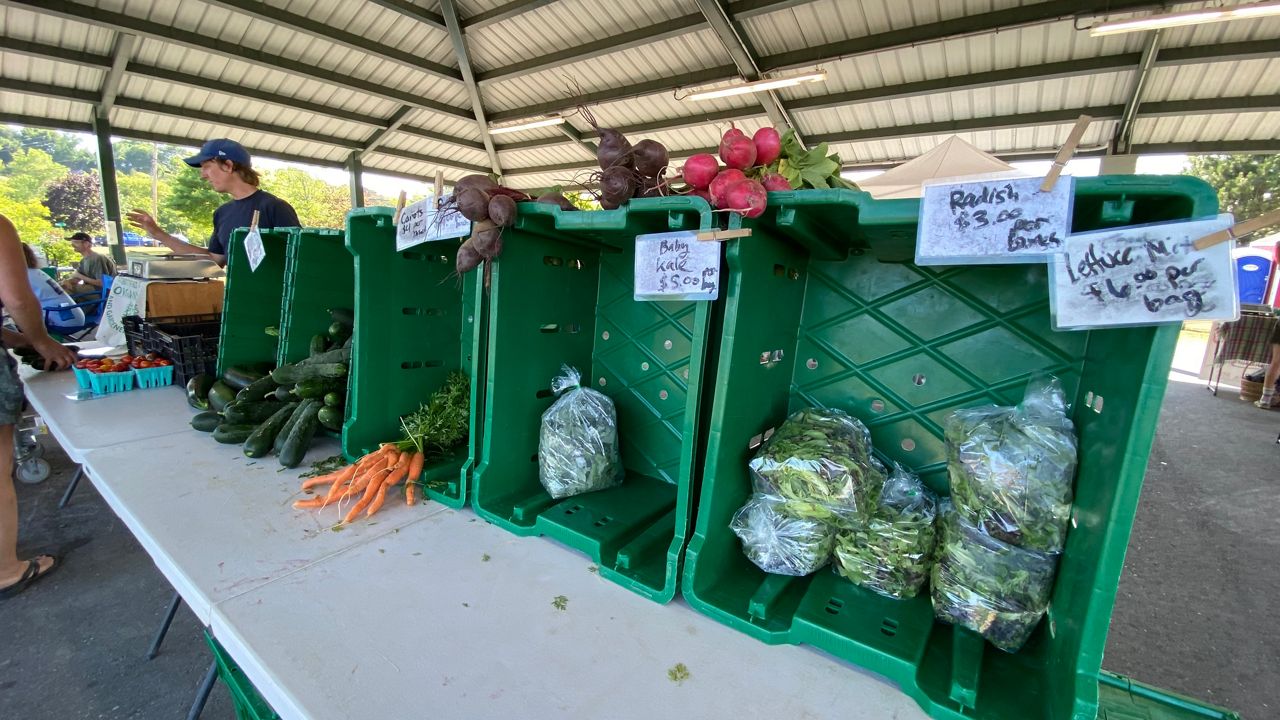Mike Perisho plans to invest in an automatic irrigation system before next year’s growing season to help water the lettuce, carrots, beets, tomatoes and other crops he grows on his farm in Gardiner.
For farmers in many parts of Maine, drier growing seasons and windy ones too, have become all too familiar.
“We’re sort of used to it at this point,” Perisho said Tuesday as he stood behind a scale at the Mill Park Farmers’ Market in Augusta. “It’s a familiar trend of being dry May through July.”
A report released Monday shows 39% of the state is abnormally dry, representing eight counties, and that 14 of the state’s 16 counties are in a moderate drought, according to the Drought Task Force Report on Current Hydrologic Conditions. Put another way, 76% of the state’s population lives in an area experiencing drier than normal conditions.
“Drought conditions have substantially worsened across southern and central portions of the state during summer 2022,” according to the report.

Those moderate drought conditions often mean the use of irrigation systems increases, said Spectrum News Maine Meteorologist Amanda Jellig. In addition, western and Downeast areas are experiencing abnormally dry conditions, which can stunt crop growth.
“Lawns will brown more easily and fire danger is elevated,” she said.
And the forecast for the next several days will provide no appreciable rain to put in a dent in the drought, Jellig said. Another data point — May was the 45th driest May in the last 128 years.
The lack of rain is prompting the Maine Emergency Management Agency Drought Task Force to call its first meeting of the year on Aug. 4, Samuel Roy, facilitator for the Maine Emergency Management Agency Drought Task Force, said.
“The onslaught of the drought has been so rapid, we’re monitoring it closely,” Roy said.
There have been few impacts so far. Five private wells have run dry, three in Cumberland County and two in Kennebec County. When it comes to public water supplies, there have been reports of “low yield” in some wells in the western mountains and Somerset County, according to the task force report.
Roy said on the agricultural side, hay season was good and conditions seem OK so far for other crops. The state is also keeping an eye on the potential for wildfires.
When it comes to precipitation, from Jan. 1 to July 9, five of the six regions tracked by the state are below average. That includes in the Portland area, where they are more than 7.5 inches below average, the Bangor area where they are 1.23 inches below average and the Houlton area, where the deficit is 1.06 inches.
The only area above average since the start of the year is Caribou, which stands at 3.36 inches above average, the report shows.
The report also notes that the “best scenario” will be cool weather with widespread and light rain that will be absorbed in the ground. But the National Climate Prediction Center “is not anticipating a strong chance for either,” according to the report.
“Drought conditions are expected to persist through at least the month of July, with the potential for deteriorating conditions,” the report says.
At Dig Deep Farm in South China, farmer Dalziel Lewis said they are likely to start watering in the next week or so. Now in her 13th growing season, she’s learned to adjust to dry spells.
“We’ve made steps to prepare for drier conditions and that makes all the difference,” she said, adding that they have a mobile irrigation system.
At Andrews Farm in Gardiner, Perisho said they are fortunate to have well water, because the old farm pond doesn’t provide enough water anymore. They grow some crops in greenhouses too, which helps them offer more crops for sale earlier.
Despite the steps he’s taken, he wouldn’t mind a little help.
“A good soaker would be welcome,” he said.



